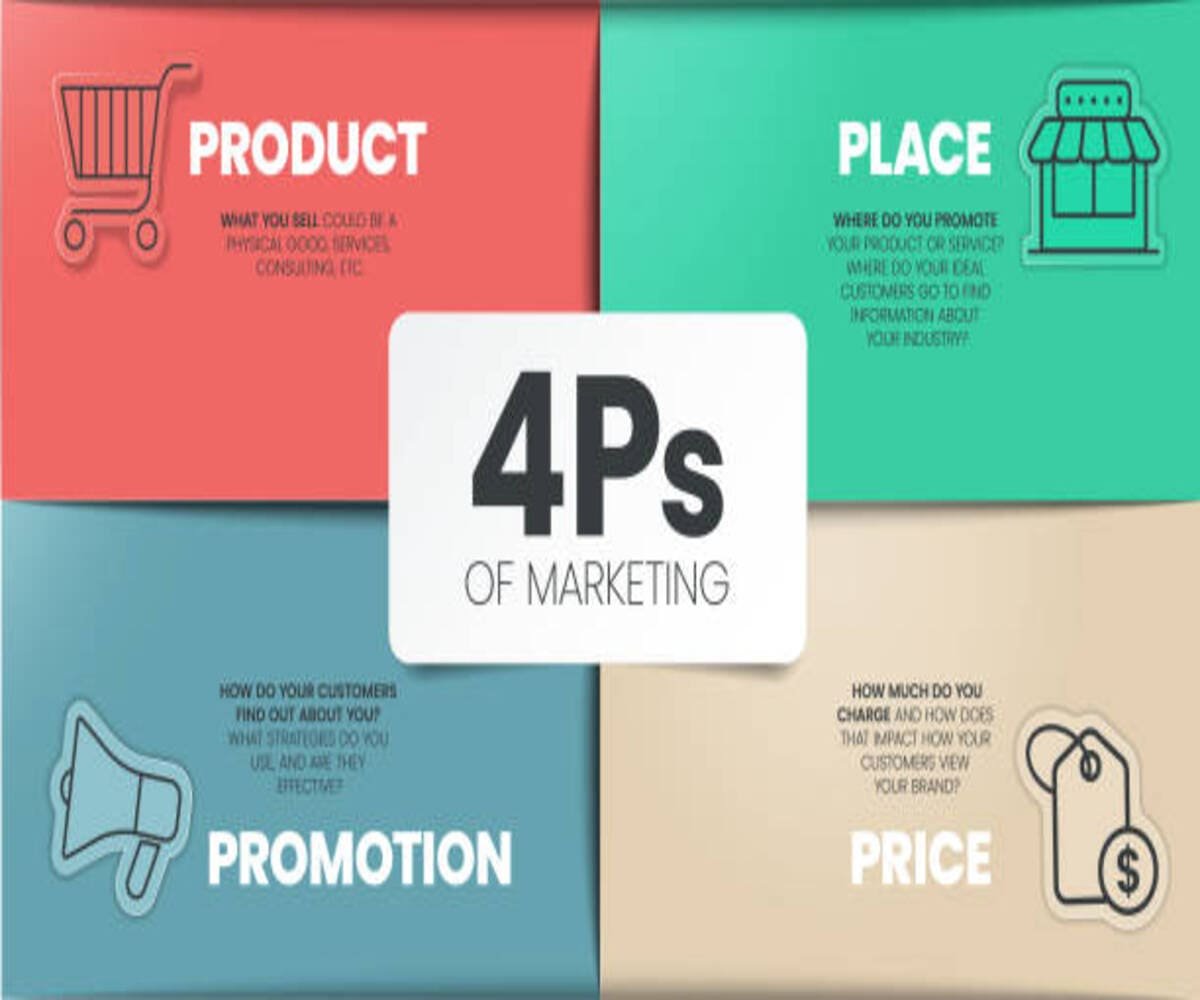Introduction- The 4Ps of Marketing
Marketing plays a vital role in business success by connecting brands with their target audiences. One of the fundamental frameworks in marketing is the 4Ps of Marketing – Product, Price, Place, and Promotion. These elements form the Marketing Mix, a strategic approach to crafting effective marketing strategies that drive business growth and customer engagement.
This guide delves deep into each of the 4Ps, explaining their significance, strategies, and best practices for businesses.
1. Product – Creating Value for Customers
A product is the foundation of any marketing strategy. It can be a physical good, a service, or an experience that fulfills customer needs.
Key Considerations:
- Product Development – Designing a product that solves a problem or enhances the customer’s life.
- Features & Benefits – Clearly defining how the product adds value to the customer.
- Branding & Positioning – Creating a unique brand identity that differentiates the product from competitors.
- Product Lifecycle Management – Understanding the stages of a product’s lifecycle: Introduction, Growth, Maturity, and Decline.
- Innovation & Improvements – Continuously refining the product based on customer feedback and market trends.
Best Practices:
✔ Conduct market research to understand customer preferences. ✔ Ensure quality control to maintain product excellence. ✔ Develop a strong USP (Unique Selling Proposition) to stand out in the market.
2. Price – Setting the Right Value
Price is the amount customers are willing to pay for a product or service. It directly impacts profitability and customer perception.
Key Considerations:
- Pricing Strategies – Choosing between cost-based, value-based, penetration, or premium pricing.
- Psychological Pricing – Using techniques like charm pricing (e.g., $9.99 instead of $10) to influence buying decisions.
- Discounts & Promotions – Offering limited-time deals, seasonal discounts, and loyalty incentives.
- Competitive Pricing – Analyzing competitor pricing to position products effectively in the market.
- Perceived Value – Ensuring the price reflects the benefits and quality of the product.
Best Practices:
✔ Conduct competitive analysis to determine optimal pricing. ✔ Use tiered pricing to cater to different customer segments. ✔ Regularly review pricing strategies based on market trends and customer feedback.
3. Place – Ensuring Accessibility & Convenience
Place refers to how and where customers can access a product. The right distribution strategy ensures the product is available at the right time and location.
Key Considerations:
- Distribution Channels – Choosing between direct (e.g., company website) and indirect (e.g., retail stores, wholesalers) distribution.
- Retail & E-Commerce Strategies – Optimizing brick-and-mortar and online sales platforms.
- Logistics & Supply Chain Management – Ensuring efficient product delivery and stock availability.
- Geographic Targeting – Expanding market reach based on location-based consumer demand.
- Omnichannel Presence – Integrating multiple sales channels for a seamless customer experience.
Best Practices:
✔ Use data analytics to optimize supply chain efficiency. ✔ Implement click-and-collect and same-day delivery options for customer convenience. ✔ Leverage global e-commerce platforms to expand market reach.
4. Promotion – Communicating & Engaging Effectively
Promotion encompasses all activities aimed at increasing brand awareness, customer engagement, and sales.
Key Considerations:
- Advertising – Using paid channels like TV, radio, digital ads, and social media campaigns.
- Public Relations (PR) – Managing brand reputation through press releases, sponsorships, and influencer partnerships.
- Sales Promotions – Running discounts, referral programs, and limited-time offers to boost sales.
- Content Marketing – Engaging customers through blogs, videos, social media, and email campaigns.
- SEO & Digital Marketing – Enhancing online visibility through search engine optimization and targeted ads.
Best Practices:
✔ Develop a multi-channel marketing strategy for wider reach. ✔ Leverage user-generated content and customer testimonials for credibility. ✔ Optimize marketing campaigns with A/B testing and performance tracking.
Conclusion
The 4Ps of Marketing – Product, Price, Place, and Promotion – work together to create successful marketing strategies. Understanding and applying these principles helps businesses enhance customer experiences, improve brand positioning, and drive long-term growth.
Master the 4Ps with SignifyHR
At SignifyHR, we help businesses craft data-driven marketing strategies tailored for success. Contact us today to refine your marketing approach and achieve sustainable business growth!

